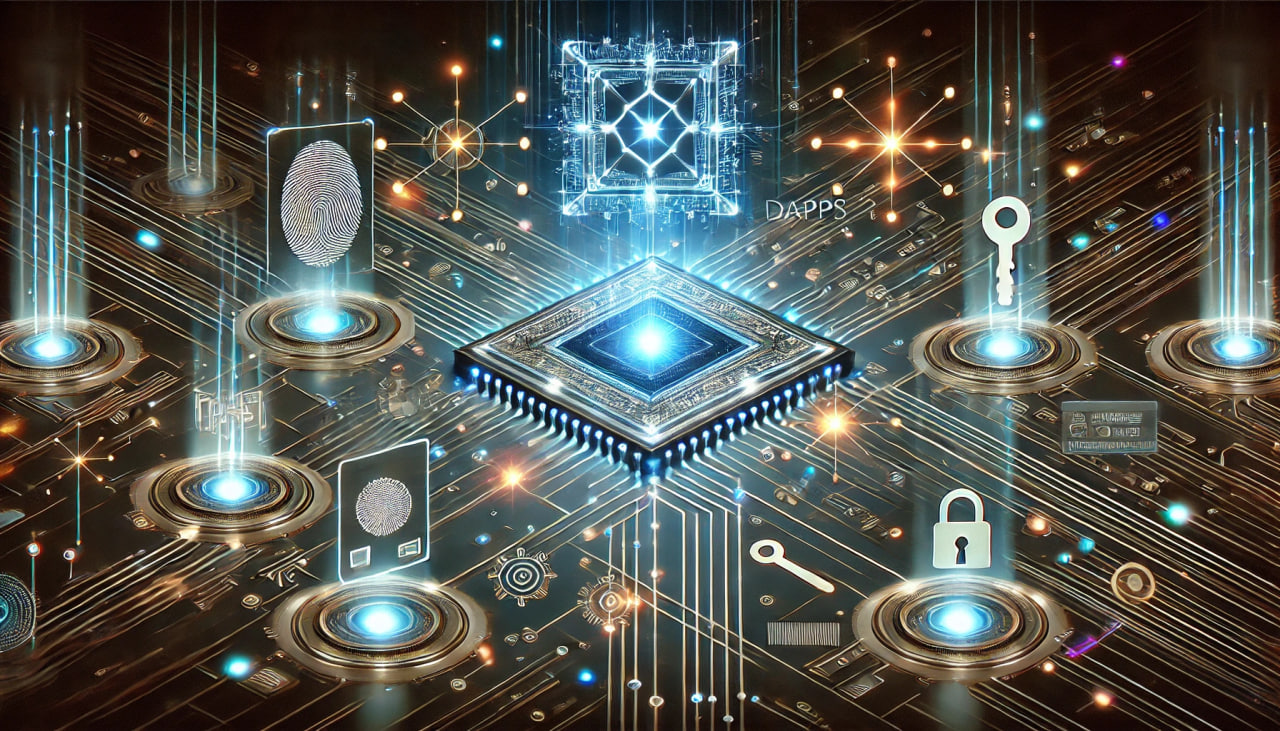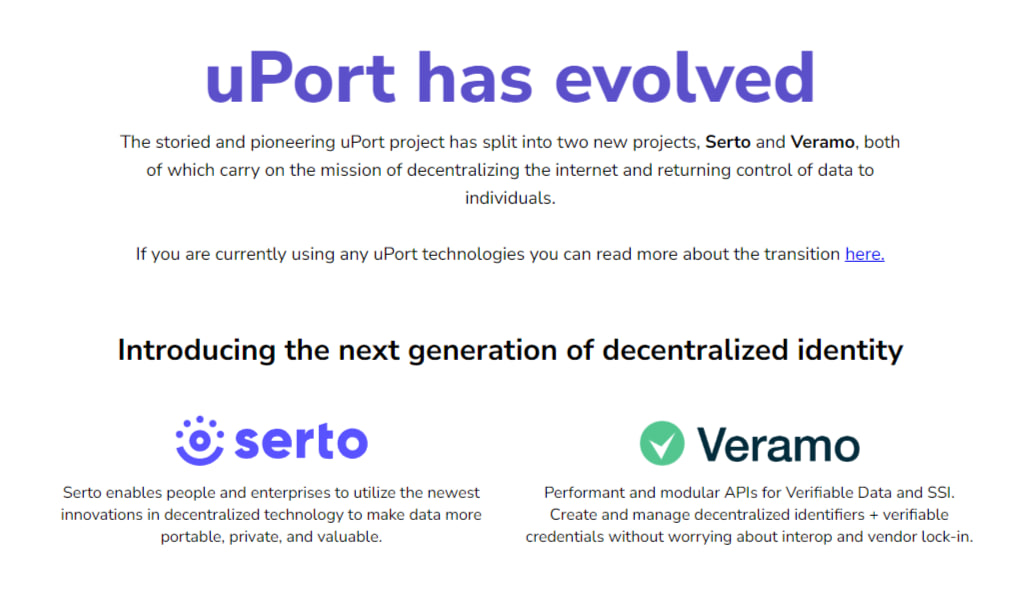With the development of blockchain technologies and decentralized systems, the world has encountered new opportunities in the field of user identification and authentication management. These technologies not only offer innovative solutions but also set a new paradigm, changing the traditional approach to storing and managing personal data. Decentralized applications (dApps), based on blockchain, open new horizons for users in terms of security and privacy, providing them with greater control over their data and protecting against threats characteristic of traditional centralized systems. In the context of growing cybersecurity threats and increasing regulatory requirements, dApps are becoming increasingly attractive to a wide range of users and organizations.
- Traditional Problems of Identification and Authentication
- Decentralized Identification and dApps
- Pros and Cons

Traditional Problems of Identification and Authentication
Identification is the process of establishing the identity of a user or system based on the presentation of unique identification data, such as a login, passport number, or email address. It serves as the first step in determining who is attempting to access a system or service.
Authentication, in turn, is the process of confirming the authenticity of the presented identification data. This is usually achieved through password verification, fingerprint scanning, or another authenticator that should be known or belong only to the given user.
The main problems faced by traditional identification and authentication systems include:
-
Password Vulnerability: Passwords can be compromised through phishing, brute force attacks, or data breaches.
-
Data Centralization: Personal user data is stored in centralized databases, which are attractive targets for hackers.
-
Access Management Complexity: In large organizations, managing access rights for different users can be complex and inefficient.
-
Credential Fragmentation: Users have to remember and manage multiple logins and passwords for different services, increasing the risk of breaches and inconvenience.
-
Lack of Privacy: Users are forced to trust their personal data to centralized organizations, which may use it for commercial purposes or unlawfully disclose it.
-
Lack of Standards and Compatibility: Different systems may not support unified standards, making the integration and unification of identification and authentication processes difficult.
Thus, traditional identification and authentication systems, despite their widespread use, face several serious problems, such as password vulnerability, data centralization, and access management difficulties. These issues not only reduce security levels but also create inconveniences for users, forcing them to seek more reliable and convenient solutions. These shortcomings highlight the need for new approaches to managing identification and authentication, which has led to the development of decentralized technologies, such as dApps.
Decentralized Identification and dApps
Traditional identification and authentication systems face a number of challenges, such as vulnerability to cyberattacks, data centralization, access management complexity, and account fragmentation. These systems rely on centralized providers, making them vulnerable to data breaches and hacks. Additionally, users often lose control over their information by entrusting it to third parties.
Decentralized applications (dApps) offer solutions to these problems by using blockchain and cryptographic methods to ensure security and control. dApps eliminate the need for central data storage, giving users the ability to manage their identification data independently, without intermediaries.
Decentralized Identifiers (DID)
Decentralized Identifiers (DID) represent a new form of identification that allows users to create and manage their digital identities without relying on centralized authorities.
The main characteristics of DID include:
-
Decentralization: DIDs do not require a centralized governing body. They exist in decentralized networks, such as blockchain, making them more secure and independent of a single point of failure.
-
User Control: The user has full control over their DID, meaning they manage access to their data and can decide who can use it and how.
-
Interoperability: DIDs can be used across different systems and contexts, ensuring compatibility between various platforms and services. This makes them a universal tool for managing digital identities.
Self-Sovereign Identity (SSI)
Self-Sovereign Identity (SSI) is a concept in which users have full control over their digital identities. Within SSI, users can create, store, and manage their identification data without the involvement of central authorities.
The key principles of SSI include:
-
Sovereignty: The user is the sole owner of their data and has full authority to decide how and where this data will be used.
-
Privacy: SSI minimizes the need to disclose personal information, giving users the ability to control what data they share and with whom.
-
Interoperability: SSI ensures compatibility with different systems, allowing users to use their digital identities in various contexts and across different platforms without needing to create new accounts.
Examples of dApps for Identification and Authentication
There are various decentralized applications that already offer blockchain-based solutions for identification and authentication:
uPort: A platform on the Ethereum blockchain that allows users to create and manage their digital identities. uPort provides tools for verification and access management of personal information.

Sovrin: A decentralized network built on Hyperledger Indy technology, which provides users with the ability to manage their identification while maintaining control over their data.
Civic: A solution for secure, password-free authentication that uses blockchain for identity verification and prevention of unauthorized access.

These technologies have the potential to transform the approach to identification and authentication management, providing more secure and convenient solutions for both users and organizations.
Pros and Cons
Decentralized applications (dApps) for identification and authentication management represent innovative solutions that offer an alternative to traditional centralized systems. These applications are based on blockchain and cryptography, making them attractive to users seeking enhanced security and control over their data. However, despite their numerous advantages, dApps also have several drawbacks that may hinder their widespread adoption and use. In this section, we will examine the main pros and cons of dApps for identification and authentication management.
| Pros of dApps | Cons of dApps |
|---|---|
| Enhanced Security: The use of blockchain and cryptography provides a high level of data protection against hacks and unauthorized access. | Scalability: Blockchain technologies may face scalability issues as the number of users and transactions increases, which can slow down the system. |
| User Control: Users have full control over their identification data and can independently decide who can access their information and how. | Complexity of Use: dApp interfaces may be less user-friendly and intuitive for the average user compared to traditional applications. |
| Transparency: All actions are recorded in an immutable ledger, making the authentication process transparent and easily verifiable. | Regulatory and Legal Issues: dApps face regulatory uncertainty, which can create challenges for their adoption in different jurisdictions. |
| Decentralization: The absence of a central governing body reduces the risk of censorship, abuse of power, and data breaches. | Lack of Support: In case of problems, users cannot turn to a centralized support service, which may complicate the resolution of technical issues. |
| Reduced Dependency on Intermediaries: Users can interact with dApps directly, without the need for third-party involvement. | Limited Adoption: Despite growing interest, dApps have yet to achieve widespread adoption, limiting their compatibility with existing systems and services. |
As seen from the table, dApps for identification and authentication management offer significant advantages, such as enhanced security, user control, and decentralization. However, at the same time, dApps face challenges like scalability, complexity of use, and legal uncertainty. These drawbacks may slow down their implementation and adoption in the mass market. Ultimately, the future success of dApps will depend on how effectively these issues are addressed and how well user experience and legal support can be improved.
Thus, traditional identification and authentication systems, despite their established role, face numerous challenges, including vulnerability to cyberattacks, data centralization, access management complexities, and account fragmentation. dApps, based on blockchain technologies, offer alternative approaches to managing identification and authentication. The use of decentralized identifiers (DID) and the concept of Self-Sovereign Identity (SSI) allows users to retain control over their data, enhance security, and minimize dependency on centralized organizations.
Ultimately, the future of dApps for identification and authentication management will depend on how effectively existing challenges can be overcome and user experience improved. If these issues are resolved, dApps have the potential to become the foundation of a new paradigm in digital identification, providing security, privacy, and control over data in the hands of users. In the era of digital transformation, dApps could play a key role in creating a more secure and decentralized digital ecosystem.



